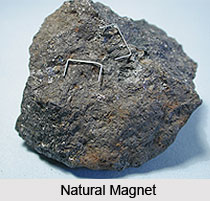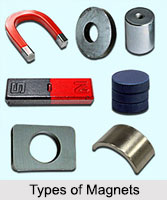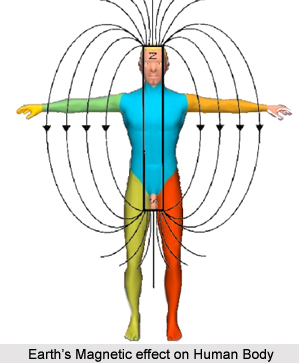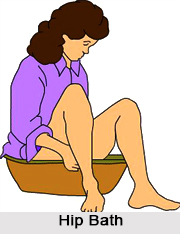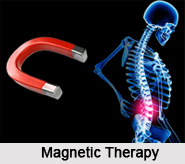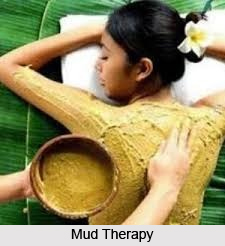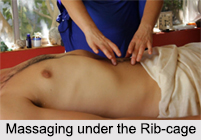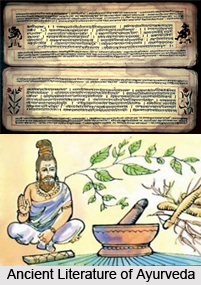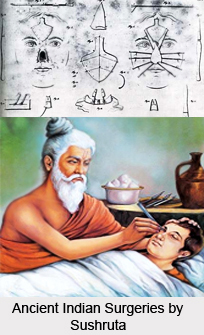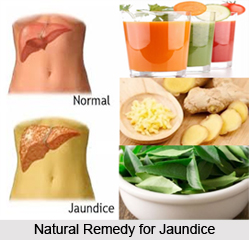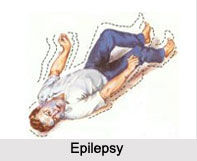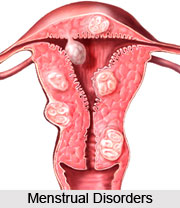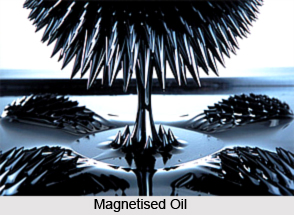 Aging is an inevitable part of life and as one ages, the individual loses muscle mass, litheness, bone mass and vital strength. As a result, one becomes more motionless and less independent. Gradually being riddled with diseases, the most irksome of all the old age disease is the joint and muscle pain and its resultant ailments. And the causes of joint muscle ailments are mostly overlooked and given to the air, when the basic thing for an aged man is to look after them. However, not all is doom and gloom that comes with aging. In order to reverse the causes of joint muscle ailments, there exists steps by which one can indeed counter the effects of aging. Before entering into the "aged man" clan, one should always pay heed to the fact that daily activities to take part in strength training and flexibility exercises early on in life, one can delay and even prevent the loss of physical mobility well into late years.
Aging is an inevitable part of life and as one ages, the individual loses muscle mass, litheness, bone mass and vital strength. As a result, one becomes more motionless and less independent. Gradually being riddled with diseases, the most irksome of all the old age disease is the joint and muscle pain and its resultant ailments. And the causes of joint muscle ailments are mostly overlooked and given to the air, when the basic thing for an aged man is to look after them. However, not all is doom and gloom that comes with aging. In order to reverse the causes of joint muscle ailments, there exists steps by which one can indeed counter the effects of aging. Before entering into the "aged man" clan, one should always pay heed to the fact that daily activities to take part in strength training and flexibility exercises early on in life, one can delay and even prevent the loss of physical mobility well into late years.
In this context of the causes of joint muscle ailments and severe recurring pain, "Active aging" comes to much help. It works on the premise that if one adopts an active lifestyle, when one is young and continue on till the ripe years, he/she can prevent many of the ailments such as arthritis, muscle aches and back pains that are widespread among the elderly. Professional therapeutics also believe that even if one is permeated with a chronic health problem, there are ways to improve fitness and health securely. The most important point to note is that in order to achieve this freedom from joint muscle ailment, one should go slow, identify the cause and build up strength and fitness accordingly. Among the recommended activities that help with cardio-vascular conditioning are aerobics, cycling, swimming and jogging. They need to be performed for half an hour a day, 5 or more days a week. To make things easier, he/she can break up the activities into three 10-minute intervals in everyday.
As such, it can verily be comprehended that prior to the commencement of such irritating disease like muscle and joint aching, he/she needs to seriously distinguish the cause of it. This is the minimum prerequisite for a basic workout but if more can be performed, jeopardy of chronic diseases such as arthritis is significantly cut down. Muscle pain relief and other forms of pain relief can be assisted by strength training that lessens stress on joints, bones and soft tissues. Knee pain relief is commonly sought among those who have trouble carrying on with daily activities such as climbing stairs or even just getting up from a chair. However, before delving deep within the elaboration of causes and its after effects of joint and muscle pain, it is necessary to distinguish the primary causes of muscle and joint ailment, sometimes ranging from everyday commonplace ones, to the rather clinically chronic and worrying ones, like:
•Autoimmune diseases, such as rheumatoid arthritis and lupus
•Bursitis
•Chondromalacia patellae
•Gout (especially found in the big toe)
•Infectious diseases, including -
| Epstein-Barr viral syndrome |
Influenza |
Measles (rubeola) |
Parvovirus |
Rubella (German measles) |
| Hepatitis |
Lyme disease |
Mumps |
Rheumatic fever |
Varicella (chickenpox) |
•Injury, also incorporating fracture
•Osteoarthritis
•Osteomyelitis
•Septic arthritis
•Tendinitis
•Unusual travail or overexploitation, including strains or sprains
Before one seeks out any kind of muscle and joint pain relief that will work, one first needs to identify what is the root cause of the problem. If the cause of the problem of joint muscle ailments is physical trauma, one is sure to find that joint and muscle pain relief will work and indeed work well! The relief however, will vary from age group to age group. Older people will suffer from such recurring problems more, as compared to younger people. In young people like teenagers and even younger children, muscle and joint pain ailments will not be too common a factor. However, they suffer from such bothering problem due to particular diseases and trauma or accidents.
Musculoskeletal disorders are the most affected by the joint muscle ailments. The pain can range from being mild or severe, local or widespread. Although pain may be incisive and short-lived, as is the case with most injuries, the pain may last for a significant period, with chronic illnesses, such as rheumatoid arthritis.
Musculoskeletal comes as the first and most irksome of the instance of cause of joint muscle ailments. The pain can be caused by damage to bones, joints, muscles, tendons, ligaments, bursae, or nerves. Injuries are the most common cause for musculoskeletal disorders. If no injury has come about or if pain hangs in for more than a few days, then another cause is often responsible for such joint muscle ailments. Bone ache is normally deep, knifelike, or plain numb; it commonly results from severe to chronic injury. Other less common causes of joint muscle ailment and bone pain includes bone infection (osteomyelitis) and tumours. Joint muscle pain is often less intense than that of bone pain but can be extremely horrid to endure. For instance, a muscle spasm or cramp (an unrelenting painful muscle contraction) in the calf is an intense pain that is commonly termed as `charleyhorse`. Pain can happen when a muscle is affected by an injury, an autoimmune effect (for example, polymyositis or dermatomyositis), deficiency in blood flow to the muscle, infection, or assault by a tumour.
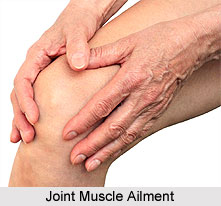
Causes of joint and muscle ailments can be witnessed again in its most intense format in tendon and ligament pain. However, this form is often less intense as compared to musculoskeletal sickness. It is often even worse when the affected tendon or ligament is stretched or moved. Common causes of tendon pain include tendinitis, tenosynovitis, lateral and medial epicondylitis and tendon injuries. Common causes of joint muscle ailment in the ligament pain format, comprises injuries (sprains). Fibromyalgia may stimulate pain in the muscles, tendons, or ligaments. The pain normally The already suffering people from joint muscle ailments usually have other symptoms to go through. Virtually, all joint injuries and diseases produce a stiff, throbbing pain, often referred to as "arthritic" pain. The pain is worsened when the joint is moved and may range from being mild to severe. With some cases, there can also be swelling of the joint together with the pain. Joint inflammation (arthritis) is a common cause of joint muscle ailment. There exist several types of arthritis, including rheumatoid and other types of inflammatory arthritis, osteoarthritis, infectious arthritis, and arthritis due to gout or pseudogout. Other causes of joint pain incorporate autoimmune and vasculitic disorders (for instance, systemic lupus erythematosus, polymyalgia rheumatica, and polyarteritis nodosa), avascular necrosis of bone and injuries (instances like, dislocations, sprains and fractures affecting the portion of the bone within the joint). Sometimes, an ache originating in structures near the joint, such as tendons and bursae, seems to be coming out from the joint.
Particular musculoskeletal disorders bring about an unnerving pain by compressing the nerves. These conditions comprise the "tunnel syndromes" (for example, carpal tunnel syndrome, cubital tunnel syndrome and tarsal tunnel syndrome). The pain is given to diversify along the path supplied by the nerve and may be too stinging. Bursal pain, yet another kind of aching joint muscle aliment, can be induced by bursitis or fibromyalgia. In general, bursal pain tends to grow worse with movement involving the bursa. Swelling can also come about, which is not at all an uncommon instance.
Sometimes, pain that seems to be musculoskeletal is in reality induced by a disorder in another organ system. For example, shoulder pain may stimulated by a disorder affecting the spleen or gallbladder. Causes of joint muscle ailment in the form of chronic back pain may be brought about by an abdominal aortic aneurysm. Then again, in similar category of the hidden causes of muscle and joint ailment, an arm pain may be induced by a heart attack (myocardial infarction). In addition, sometimes pain that seems to be travelling from one part of the musculoskeletal system, essentially travels from another part. For instance, knee pain in an adolescent may be caused by a disorder of the hip referred to as slipped capital femoral epiphysis.
At times, it can always be witnessed that causes of joint muscle ailments includes within its vast scope of `destruction`, an individual, who might just not be able to move all or part of the body, that too moving with much difficulty. Moving may be exceedingly unmanageable because of disorders that restrict joint motion or that produces debilitation. Free movement can also be delimited when motion induces pain. Specific nervous system abnormalities interfere with movement without causing pain or weakness. For instance, Parkinson`s disease causes muscle stiffness, tremor and difficulty initiating movement, vastly different from some mere cause of joint muscle ailment.
A muscular joint ailment that is stiffened by scar tissue from a prior injury can have restrained range and speed of motion. When a normal joint is not employed properly, it may stiffen. For example, when a person`s arm is paralysed by a stroke or even positioned in a sling for a period of time, the joints in the shoulder and elbow may develop scar tissue that freezes the joint in position, if the arm is not regularly flexed and stretched. The fluid that accumulates in a joint from arthritis or an acute injury can interfere with joint motion, thus becoming a major cause of everyday joint muscle ailment. A piece of ruptured cartilage from an injury (typically in the knee) may block joint motion too.
Weakness that is primarily caused by any kind of joint muscle ailment, although possesses its variety of difference. Many people grumble about weakness when they feel tired or exhausted; however, true weakness implies that full effort does not generate normal muscle contractions. Normal voluntary muscle contraction necessitates that the brain produces a signal that then travels through the spinal cord and nerves to reach a normally functioning muscle. Thus, true weakness can only result from major injury or disease affecting the central nervous system, muscles, or connections between them (neuromuscular junction).
Causes of joint muscle ailments can obviously be associated with the malfunctioning of the functions of the brain. Brain troubles include strokes, injuries, tumours and degenerative disorders (such as multiple sclerosis, which also can affect the spinal cord and nerves). Spinal cord disorders further come about by negligence of the joint muscular ailments, resulting in injury, bleeding and even tumours. Spinal nerve roots can be affected by a ruptured intervertebral disk and peripheral nerves by injury or polyneuropathy. The neuromuscular junction can be affected by myasthenia gravis, drugs like botulinum toxin. Muscle and joint disorders causing weakness include muscular dystrophy and polymyositis. The muscle weakness that most commonly occurs following immobilisation (in an unmoved cast or from lengthened bed rest) and in old age is due to a step-down in muscle mass (sarcopenia) and ensues from lack of use. The remaining muscle mass though serves normally, but there is loss of an adequate amount.
Weakness from chronic causes of joint muscle ailments may be delimited to one extremity or part of an extremity, as is characteristically the case when a single nerve, joint, or muscle is affected, or diffused, as occurs in prevalent neurologic or muscular diseases. People with painful ailments in the muscles, ligaments, bones, or joints, tend to consciously and unconsciously restrict and set back their movements. This often lends an impression of weakness even though the central nervous system and muscles are able to generate proper movement.
More than 90 percent of people suffering from Systemic lupus erythematosus (SLE) is sure to experience joint and/or muscle pain at some time during the course of their illness. At the onset of this cause of joint muscle ailment and resultant disease, the major illness of more than half of SLE patients is severe pain in the joints. The major cause of joint muscular pain in SLE is gradual, yet at times unnoticed swelling of the joints.
The term for this is in medical world is however "arthritis". In the affected joint, arthritis can horribly stimulate:
•pain
•swelling
•tenderness
•a feeling of warmth
•fluid accumulation.
Joint and muscular ailment in and around the joints is however not always due to lupus arthritis. Pain can also be caused due to other medical disorders that may complicate or co-exist with SLE, including:
•fibromyalgia
•avascular necrosis of bone
•bursitis and tendonitis,
•other types of arthritis
•Infection.
Cause of joint muscle ailments basically dealing with inflammation of skeletal muscle also may develop in people suffering from SLE. This condition, stated as myositis, causes progressive weakness and complete loss of strength of the extremities.
Joint stiffness is common with arthritis, considered a major cause of joint muscle ailment. Disorders of joints often intervene with joint movement adequately to generate stiffness. An everyday instance is the morning stiffness that occurs with rheumatoid arthritis, in which stiffness typically comes about on arising and gradually betters with activity only after an hour or two. This stiffness is also very much there during the day if one sits for too long. Some conditions, such as injuries that stretch or rupture ligaments, may increase joint looseness (laxity), most commonly permitting inordinate or abnormal bending of joints and thus making the joints precarious. Cause of joint muscle ailment and its looseness is brought about in a connective tissue disease named cutis laxa.
Joint crepitus or noises, such as creaks and clicks, are widespread in many people, but they can also occur with specific problems of the joints. For instance, the base of the knee cap may squeak when it is damaged by osteoarthritis and the jaw may click in a person who is suffering from temporomandibular joint disorder. The scope of motion in a joint may be reduced because it hurts to move the joint (such as when the joint is swelled up), because the joint itself has been injured by disease, or because long-term shortage of movement has allowed the joint to become fixed.
People often experience "hidden" causes of joint muscle ailments due to changes in their job profile, their paraphernalia, their everyday routine, their household furniture and their clothes, etc.
Such unusual and unnoticed causes can be stated as:
•
The bed: The bed in which one sleeps, may not be firm enough. He/she can try slipping a board in between the top mattress and the box spring. As an alterative, if one sleeps in a waterbed , it is best advised to try sleeping on the floor for a few nights instead of this bumpy furniture. These simple changes completely heals one`s aching hips and back, or the sore shoulders/bursitis.
•
The shoes: Even when one tends to incorporate any kind of magnified toll into one`s ill-fitted shoes, the this still hurts. In such a state, one really needs a pair of firmer shoes, in order to just plainly avoid such a silly cause of further arriving joint muscle ailment.
Under normal circumstances, there can exist various everyday specific causes of joint muscle ailments. Pain in the elbow for instance, can be caused due to many reasons. A person suffering from neck pain, back pain, etc. is bound to suffer from elbow pain. Likewise bad postures, walking habits, wrong sitting posture, always sleeping one sided for long can also cause elbow pain; so also can lifting of too much of and unreasonable weight. Inappropriate physical exercise is commonly known to cause all kinds of arm pain. It is hence important that one is ever cautious in his/her manner of walking, sitting, sleeping, lifting and exercising to avoid pain of any kind in an everyday basis.
 Aging is an inevitable part of life and as one ages, the individual loses muscle mass, litheness, bone mass and vital strength. As a result, one becomes more motionless and less independent. Gradually being riddled with diseases, the most irksome of all the old age disease is the joint and muscle pain and its resultant ailments. And the causes of joint muscle ailments are mostly overlooked and given to the air, when the basic thing for an aged man is to look after them. However, not all is doom and gloom that comes with aging. In order to reverse the causes of joint muscle ailments, there exists steps by which one can indeed counter the effects of aging. Before entering into the "aged man" clan, one should always pay heed to the fact that daily activities to take part in strength training and flexibility exercises early on in life, one can delay and even prevent the loss of physical mobility well into late years.
Aging is an inevitable part of life and as one ages, the individual loses muscle mass, litheness, bone mass and vital strength. As a result, one becomes more motionless and less independent. Gradually being riddled with diseases, the most irksome of all the old age disease is the joint and muscle pain and its resultant ailments. And the causes of joint muscle ailments are mostly overlooked and given to the air, when the basic thing for an aged man is to look after them. However, not all is doom and gloom that comes with aging. In order to reverse the causes of joint muscle ailments, there exists steps by which one can indeed counter the effects of aging. Before entering into the "aged man" clan, one should always pay heed to the fact that daily activities to take part in strength training and flexibility exercises early on in life, one can delay and even prevent the loss of physical mobility well into late years.
 Causes of joint and muscle ailments can be witnessed again in its most intense format in tendon and ligament pain. However, this form is often less intense as compared to musculoskeletal sickness. It is often even worse when the affected tendon or ligament is stretched or moved. Common causes of tendon pain include tendinitis, tenosynovitis, lateral and medial epicondylitis and tendon injuries. Common causes of joint muscle ailment in the ligament pain format, comprises injuries (sprains). Fibromyalgia may stimulate pain in the muscles, tendons, or ligaments. The pain normally The already suffering people from joint muscle ailments usually have other symptoms to go through. Virtually, all joint injuries and diseases produce a stiff, throbbing pain, often referred to as "arthritic" pain. The pain is worsened when the joint is moved and may range from being mild to severe. With some cases, there can also be swelling of the joint together with the pain. Joint inflammation (arthritis) is a common cause of joint muscle ailment. There exist several types of arthritis, including rheumatoid and other types of inflammatory arthritis, osteoarthritis, infectious arthritis, and arthritis due to gout or pseudogout. Other causes of joint pain incorporate autoimmune and vasculitic disorders (for instance, systemic lupus erythematosus, polymyalgia rheumatica, and polyarteritis nodosa), avascular necrosis of bone and injuries (instances like, dislocations, sprains and fractures affecting the portion of the bone within the joint). Sometimes, an ache originating in structures near the joint, such as tendons and bursae, seems to be coming out from the joint.
Causes of joint and muscle ailments can be witnessed again in its most intense format in tendon and ligament pain. However, this form is often less intense as compared to musculoskeletal sickness. It is often even worse when the affected tendon or ligament is stretched or moved. Common causes of tendon pain include tendinitis, tenosynovitis, lateral and medial epicondylitis and tendon injuries. Common causes of joint muscle ailment in the ligament pain format, comprises injuries (sprains). Fibromyalgia may stimulate pain in the muscles, tendons, or ligaments. The pain normally The already suffering people from joint muscle ailments usually have other symptoms to go through. Virtually, all joint injuries and diseases produce a stiff, throbbing pain, often referred to as "arthritic" pain. The pain is worsened when the joint is moved and may range from being mild to severe. With some cases, there can also be swelling of the joint together with the pain. Joint inflammation (arthritis) is a common cause of joint muscle ailment. There exist several types of arthritis, including rheumatoid and other types of inflammatory arthritis, osteoarthritis, infectious arthritis, and arthritis due to gout or pseudogout. Other causes of joint pain incorporate autoimmune and vasculitic disorders (for instance, systemic lupus erythematosus, polymyalgia rheumatica, and polyarteritis nodosa), avascular necrosis of bone and injuries (instances like, dislocations, sprains and fractures affecting the portion of the bone within the joint). Sometimes, an ache originating in structures near the joint, such as tendons and bursae, seems to be coming out from the joint.





